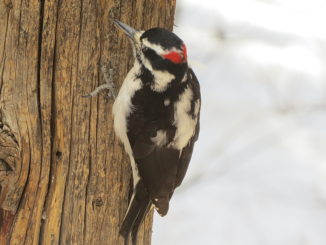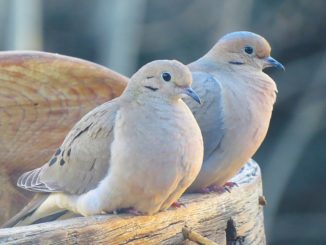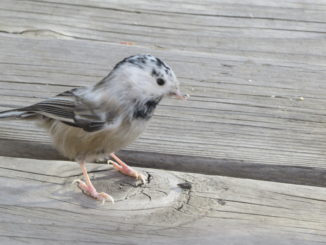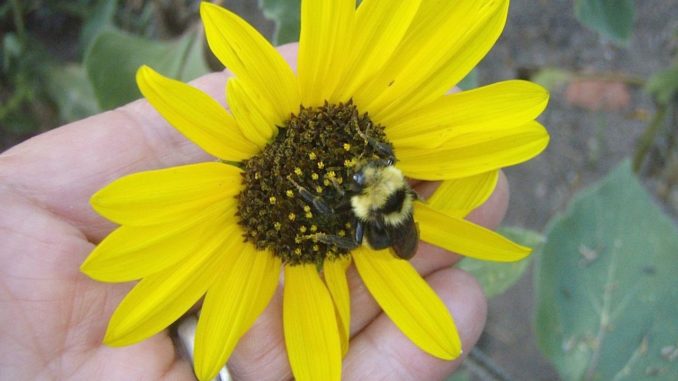
by Sally Roth
Hard to miss the cheerful sunflowers that bloom throughout NOCO, along roadsides, at the edges of farm fields, and in empty lots! These shorter, smaller-flowered sunflowers are our native species—prairie sunflower (Helianthus petiolaris).
Long side branches give the plants a much more graceful shape than the usual annual sunflowers (Helianthus annuus) that sprout from spilled birdseed or for which we plant seeds in our gardens.
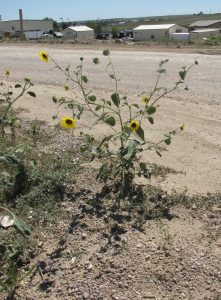
One of the many native sunflowers at the Larimer County Landfill—notice the long side branches.
The flowers of our native prairie sunflowers are smaller, too, about 4-5 inches across, with dark centers. The seeds are tiny, compared to the massive heads of Helianthus annus, but the seedheads are just as jam-packed.
When they’re in full bloom, all sunflower blossoms follow the sun, turning their faces from east to west as the sun tracks across the sky.
Beginning in late summer, the flowers begin to mature and ripen into nutritious high-fat seeds. Whether you have a single plant in your garden, or acres of them, like at the Larimer County Landfill or in wild meadows, birds are drawn to the feast.
The flowers attract butterflies, bees, bumblebees, and lots of other pollinators. Then, starting in late summer and continuing through fall, the seeds bring in American and lesser goldfinches, pine siskins, house finches, Cassin’s finches, downy woodpeckers and other seed-eaters, who cling to the seedheads and crack the seeds on the spot.
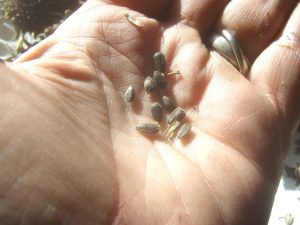
The seeds of NOCO’s native sunflower, Helianthus petiolaris, are much smaller than those of the usual garden-grown annual sunflower, but they’re just as popular with birds.
Prairie sunflowers have lots of small seeds, and, despite the birds that seek them out, enough dropped seeds will survive to sprout a new patch next year.
In the garden, the graceful plants are a beautiful backdrop to cosmos, marigolds, salvias, wildflowers—any flowering annual or perennial. Snag a seedhead yourself now, before the birds get them, and give them a try next year! Next spring, thumb out the seeds onto an open sunny spot, and cover them by crumbling a handful of soil lightly over them to protect them from birds. Then enjoy the show of cheerful flowers in summer, and look for the birds that seek them out from late summer through fall.
Support Northern Colorado Journalism
Show your support for North Forty News by helping us produce more content. It's a kind and simple gesture that will help us continue to bring more content to you.
BONUS - Donors get a link in their receipt to sign up for our once-per-week instant text messaging alert. Get your e-copy of North Forty News the moment it is released!
Click to Donate

